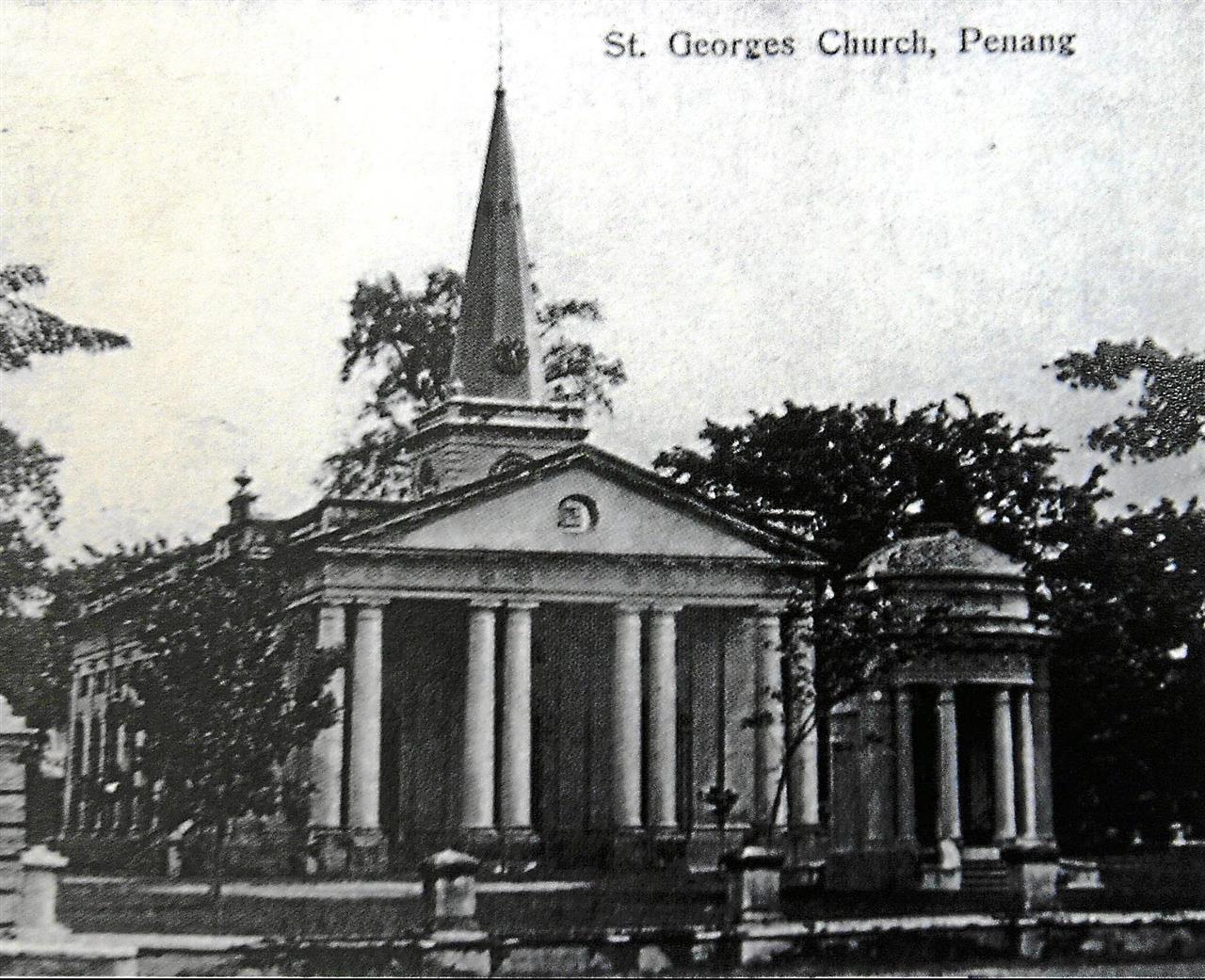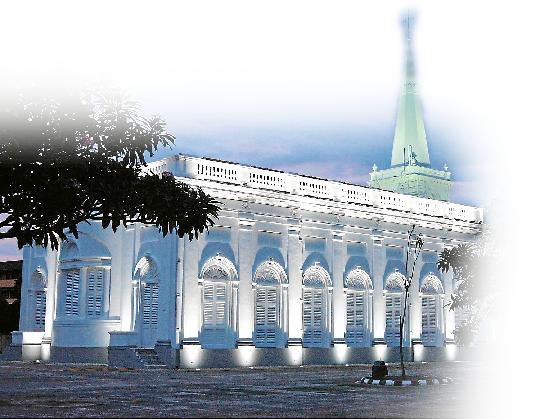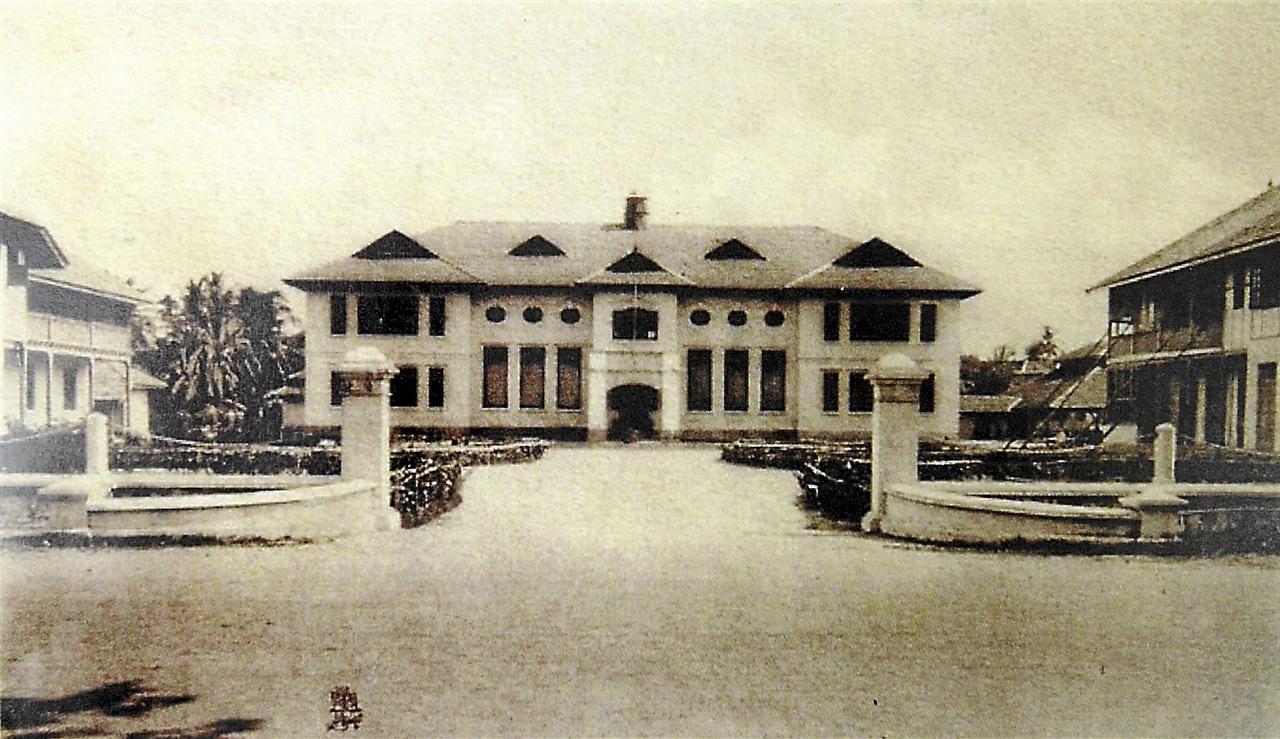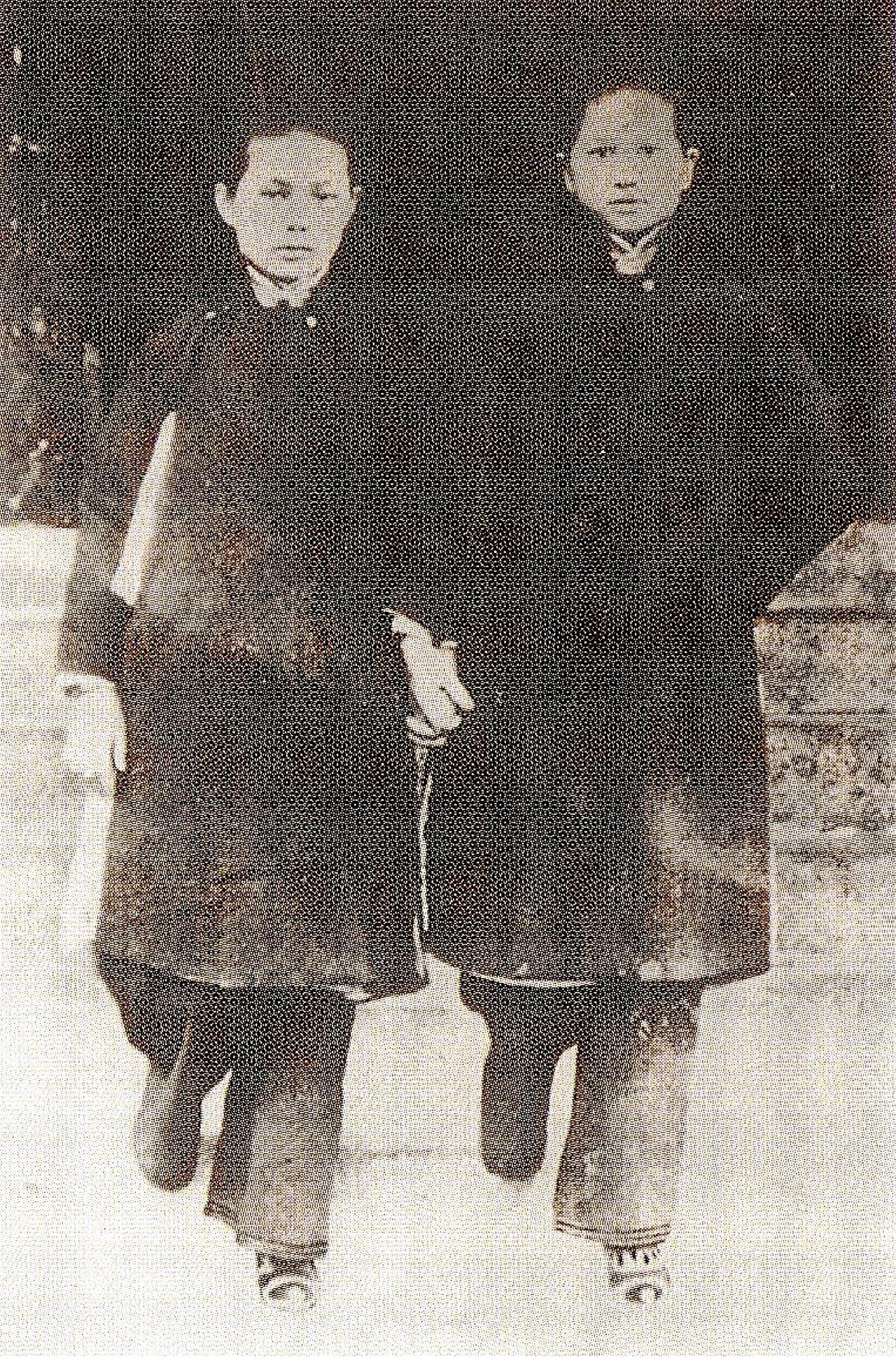
The newly refurbished church in Farquhar Street is one of the country’s 50 national treasures.
IT IS easily the most beautiful church in Penang but more than that, St George’s Church, which was built in 1816, is the oldest Anglican church in South-East Asia.
Not surprisingly, the church, located on Farquhar Street, has been declared one of the 50 national treasures of Malaysia by the Government.
The landmark church was completed in 1818 on the initiative of the Penang Colonial Chaplain Rev Robert Sparke Hutchings, more popularly known as the founder of the Penang Free School.
Much has been written about Hutchings but there is another name associated with the church that is not so common — Rev Louis Coutier Biggs, of which Biggs Road is named after.
Biggs Road is a relatively unknown tree-lined road in the Ayer Rajah/Pulau Tikus area, which runs from Cantonment Road on one end to Park Road on the other.
Biggs is virtually unknown today even to Penangites, which is quite sad considering the unwritten legacy he had left behind.
Biggs and his wife, Katherine, were missionaries of the St George’s Anglican Church, who had the honour of founding the St George’s Girls School.
In 1886, he also founded the St Paul’s Church, formerly known as the St George’s Church Chinese Mission, which is located on Macalister Road.
Biggs was a man of distinction, graduating at Oxford with a Bachelor of Arts degree in 1863 and a Master’s degree in 1866. He was already an ordered deacon in 1864 and ordained a priest in 1865.
He was the Colonial Chaplain of Penang from 1885 to 1897.
Their contributions to church and education are thankfully well-recorded in Penang.
According to reports, the St George’s Girls’ School, now located on Macalister Road, was started on Farquhar Street at their home called “The Manse”.
It was here that Mrs Biggs taught for a year before a formal school was set up and named after St George, the patron saint of England, who is often pictured slaying a red dragon.
St George was often used throughout the British Empire for schools and churches established by Anglican missionaries.
In Penang, it is reported that in the early days of St George’s Girls’ Schools, the pupils mostly come from well-to-do families.
“They often come to class on trishaws, shielded from public view by a curtain, ferried right up to the school entrance.
“In that Victorian age, it was considered indecent for unmarried ladies — especially those of well-to-do families — to be seen in public,” one report said.
The school population expanded and it was relocated to its present premises in 1954.
The school has produced famous personalities such as Raja Permaisuri Tuanku Bainun, Wanita Umno leader Datuk Seri Shahrizat Abdul Jalil, playwright Datuk Faridah Merican, conductor Datuk Ooi Chean See, historian-writer Khoo Salma Nasution, athlete-sports psychologist Zaiton Othman, journalist-actor Fatimah Abu Bakar and former DAP women’s wing chief Dr Oon Hong Geok.
“Former students included the daughters of Dr Sun Yat Sen, the founder of the Republic of China — Sun Yan and Sun Wan,” according to Giving Our Best: The Story of St George’s Girls’ School, jointly written by Khoo Salma Nasution, Alison Hayes and Sehra Yeap Zimbulis.
The Sun girls stayed in Penang from September 1910 to February 1912, and attended St George’s in 1911. “Here, they spent precious time with their father, who was usually away making revolution,” they wrote.
Readers write
Remembering C.Y. Choy
Patrick J. Rogers writes: “Thank you for a nice write-up on my late beloved Uncle C.Y. Choy. I have great memories of him but there is an error regarding his name. His name is Chooi Yew Choy (C. Y.Choy) and not Choy Chee Yew.
Uncle Choy (as we family members addressed him) is my late mother’s eldest brother. C.Y.Choy’s other siblings were his second brother Chooi Yew Hong and his two sisters Chooi Vai Ying & my late mother Chooi Phooi Ying. All have since passed on. His parents were Chooi Fong Chooi and his wife Madam Wong Ah Khoo.
Chun Wai replies: Thank you for the clarification.
The fun of watching movies
Azman Yusof writes: Your story on the cinemas in Penang sometimes back brought back sweet memories for me. On the way back to our boarding school, my friends and I would take the early train to Butterworth from Arau and Alor Setar before taking the night mail train to Kuala Kangsar. That would give us enough time to hop over via the ferry to watch David Chiang, Ti Lung , Chen Kuan Tai and even Wang Yu on the big screen.
We would then be able to brag to others that we had seen this and that film when they arrived at the small town of Kuala Kangsar months later! Those Shaw Bros movies, mainly sword-fighting flicks, were very popular with us Malay boys then (until Bruce Lee came and front-kicked, side-kicked, back-kicked, everywhere kick kick everyone else out of the cinemas).
All of us would look forward to the scene where the hero would say “Wor yau por chau” (or something like that), meaning “I will take revenge”.
Another scene would be when the villain said something like, “You must be tired of living!” That was in 1970 to 1972. Before that, I think the furthest railway station was in Prai. You had to take a bus to Butterworth before you can board the ferry.
But with the new station in Butterworth, you just need to walk less than 100m to the Ferry Terminal. If not for the new station, we would probably watch David Chiang and company a few months later like the rest of them mere mortals.
Something about the Brittania Lodge
Ahila writes: I am a long-time resident of Penang. I have been reading all your articles about Penang since the series started. On June 29, you wrote about Gottlieb Road and the Penang Chinese Girl’s High School.
Before the school was built, on the opposite side, there was a big house surrounded by rambutan trees called the Brittania Lodge. The grounds of the property, surrounded by rambutan trees, stretched all the way from Ramanathan Road to the end of New Bob building.
The house was owned by Mr Lim Cheng Law and later by one Mr Arulambalam, a retired station master who subdivided the property into smaller lots and sold them off.
This Lim Cheng Law earlier owned a house in Logan Road next to the present Methodist Girls School. And he lived next door to Arulambalam.









